Today Current Affairs:15th June 2022 for UPSC IAS exams, State PSC exams, SSC CGL, State SSC, RRB, Railways, Banking Exam & IBPS, etc
Table of Contents
TDS On Virtual Digital Assets:

The Government of India clarified that the TDS on virtual digital assets (VDA) continues to be 1%.
- The clarification from the Income Tax comes at a time when some media reports mentioned that the TDS rate for virtual digital assets has been dropped to 0.1% from 1% as announced earlier in the budget.
- The 1% TDS will be applicable from July 1.
- The Centre had set a 30% taxation on the gains from the cryptocurrency assets.
- TDS is a liability enforced against the exchanges that deposit tax on behalf of sellers on the platform.
- It will be calculated at 1% of the transaction value.
Schedule Of Election For The 16th Presidential Election:
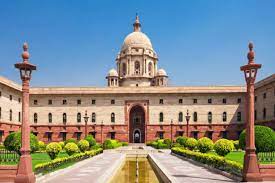
Election Commission of India has announced the schedule of election for the 16th Presidential Election.
- The term of office of Shri Ram Nath Kovind, President of India, is ending on 24th July, 2022.
- As per Article 62 of the Constitution of India, an election to fill the vacancy caused by the expiration of the term of office of the outgoing President is required to be completed before the expiration of the term.
- Article 324 of the Constitution read with the Presidential and Vice-Presidential Elections Act, 1952, and the Presidential and Vice – Presidential Elections Rules, 1974 vests the superintendence, direction and control of the conduct of election to the office of the President of India in the Election Commission of India.
- As per the Article 54 of the Constitution of India, the President is elected by the members of the Electoral College consisting of:
- elected members of both Houses of Parliament, and
- elected members of the Legislative Assemblies of all States including National Capital Territory of Delhi and the Union Territory of Puducherry
- Nominated members of Rajya Sabha, Lok Sabha and the Assemblies, and members of state Legislative Councils, are not part of the electoral college.
- Article 55 (3) of the Constitution provides that the election shall be held in accordance with the system of proportional representation by means of the single transferable vote and the voting at such election shall be by secret ballot.
- The votes are weighted, their value determined by the population of each state as per Census 1971.
Guidelines For Prevention Of Misleading Advertisements And Endorsements For Misleading Advertisements, 2022:

The Central Consumer Protection authority (CCPA) under the Department of Consumer Affairs has notified ‘Guidelines for Prevention of Misleading Advertisements and Endorsements for Misleading Advertisements, 2022’.
- The guidelines seek to ensure that consumers are not being fooled with unsubstantiated claims, exaggerated promises, misinformation and false claims.
- Such advertisements violates various rights of consumers such as right to be informed, right to choose and right to be safeguarded against potentially unsafe products and services.
- In exercise of the powers conferred by section 18 of the Consumer Protection Act, 2019, to CCPA, the Guidelines were notified. Misleading advertisement has already been defined under section 2(28) of the Consumer Protection Act, 2019.
- The present guidelines define “bait advertisement”, “surrogate advertisement” and clearly provides what constitutes as “free claim advertisements”.
- CCPA can impose penalty of upto 10 lakh rupees on manufacturers, advertisers and endorsers for any misleading advertisements. For subsequent contraventions, CCPA may impose a penalty of upto 50 lakh rupees.
- The Authority can prohibit the endorser of a misleading advertisement from making any endorsement for upto 1 year and for subsequent contravention, prohibition can extend upto 3 years.
Network Planning Group (NPG):
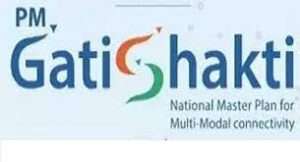
The Network Planning Group (NPG) held its 20th meeting on June 2022 at Udyog Bhawan, New Delhi.
- It was chaired by the Special Secretary, Logistics Division, Department for Promotion of Industry and Internal Trade (DPIIT) and saw active participation from member ministries/departments including MoRTH, MoCA, MoR, MoPSW, MoP, DoT and Niti Ayog.
- The forum saw senior officials from these ministries deliberate on various agendas on logistic capacities and PM GatiShakti.
- Prime Minister launched PM GatiShakti NMP for multi-modal connectivity on 13th October, 2021. Implementation framework includes Empowered Group of Secretaries (EGOS), Network Planning Group (NPG) and Technical Support Unit (TSU) with required technical competencies.
- NPG consists of heads of the network planning wing of respective infrastructure ministries and it will assist the Empowered Group of Secretaries (EGOS), which is headed by the cabinet secretary.
- EGOS consists of secretaries of 18 ministries as members and Head of Logistics Division, under the DPIIT, as member convenor.
- NPG will clear the projects as all infrastructure projects would have to come here.
SIPRI Yearbook 2022:
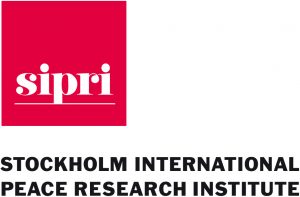
The Stockholm International Peace Research Institute (SIPRI) launched the findings of SIPRI Yearbook 2022, which assesses the current state of armaments, disarmament and international security.
- The nine nuclear-armed states—the United States, Russia, the United Kingdom, France, China, India, Pakistan, Israel and the Democratic People’s Republic of Korea (North Korea)—continue to modernize their nuclear arsenals and although the total number of nuclear weapons declined slightly between January 2021 and January 2022, the number will probably increase in the next decade.
- India had 160 nuclear warheads as of January 2022 and it appears to be expanding its nuclear arsenal.
- Nuclear warheads are the explosive head of a missile or torpedo that uses nuclear energy.
- India’s nuclear stockpile increased from 156 in January 2021 to 160 in January 2022.
- China had 350 nuclear warheads in January 2021 as well as January 2022.
- India does not share official data on its nuclear arsenal.
- Russia and the USA together possess over 90% of all nuclear weapons.
- SIPRI identified 164 states as importers of major arms in 2016-20.
- The five largest arms importers were Saudi Arabia, India, Egypt, Australia and China, which together accounted for 36% of total arms imports.
- The region that received the largest volume of major arms supplies in 2016-20 was Asia and Oceania, accounting for 42% of the global total, followed by the Middle East, which received 33%.
- The five largest suppliers in 2016-20 – the United States, Russia, France, Germany and China – accounted for 76% of the total volume of exports of major arms.
National e-Governance Service Delivery Assessment 2021:
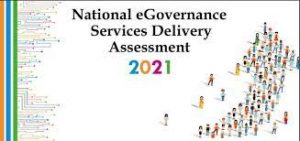
Ministry of Personnel, Public Grievances and Pensions releases the second edition of the National e-Governance Service Delivery Assessment 2021, NeSDA 2021.
- J&K tops among UTs in e-Governance services delivery, saves around Rs 200 crore annually that was incurred in carriage of physical files during the Annual Durbar move between the two capital cities of Jammu and Srinagar.
NeSDA 2021 Assessment:
- Among the Central Ministry Services Portals, scores have improved for 6 portals while among States and UTs, scores have improved for 28 of the State / UT Portals and for 22 of the State / UT Services Portals.
- In the category of State/UT portal, among group A states- Kerala became a front runner and the progress was made by Tamil Nadu followed by Punjab.
- Among group B states- Odisha being at top followed by Uttar Pradesh and Bihar.
- Among Nort-Eastern states Nagaland, Meghalaya and Assam are at top.
- Among UTs, J&K topped followed by A&N, Puducherry, Delhi and Chandigarh.
NeSDA 2021:
- For Digital Government excellence, the National e-Governance Service Delivery Assessment (NeSDA) initiative has been undertaken by the Department of Administrative Reforms & Public Grievances (DARPG).
- NeSDA was launched in August 2018, based on the Online Service Index (OSI) of UNDESA eGovernment Survey (UN E-Government Survey 2020 by the United Nations Department of Economic and Social Affairs, since 2001).
- This is the second edition of NeSDA, the first edition was launched in 2019.
- NeSDA Framework covers six sectors, viz. Finance, Labour & Employment, Education, Local Government & Utilities, Social Welfare (including Agriculture & Health) and Environment (including Fire) sectors.
- The framework covers services under G2B (Government to Businesses) and G2C (Government to Citizens) segments, in these six sectors.
- During NeSDA 2021, additional 6 mandatory services at State / UT level and 4 services at Central Ministry level would be evaluated.
- The NeSDA framework primarily assessed all the service portals (State/UT and Central Ministry service portals) on 7 key parameters. In NeSDA 2021, the framework has been enhanced to include additional 6 parameters.
- The portals assessed were classified into one of two categories.
- State/UT/Central Ministry Portal, the designated portal of the respective government that provides a single window access to information and service links, is the first category.
- The second category comprises of the State/UT/Central Ministry Services Portals which focus on the digital delivery of services and provide service-related information.
Maya Technique Of Maize Fortification:

A study has thrown light on how Maya people fortified their maize with the chemical process known as ‘nixtamalisation’ and also built indoor toilets in pits they dug into the limestone bedrock of the Yucatan peninsula in Mesoamerica.
- The Maya are an indigenous people of Mexico and Central America who have continuously inhabited the lands comprising modern-day Yucatan, Quintana Roo, Campeche, Tabasco, and Chiapas in Mexico and southward through Guatemala, Belize, El Salvador and Honduras.
- The Maya are probably the best-known of the classical civilizations of Mesoamerica.
- The Maya civilization originated in the Yucatan Peninsula. Known for its monumental architecture and an advanced understanding of mathematics and astronomy.
- The rise of the Maya began about 250 CE, and what is known to archaeologists as the Classic Period of Mayan culture lasted until about 900 CE. At its height, Mayan civilization consisted of more than 40 cities, each with a population between 5,000 and 50,000.
- But then, suddenly, between 800 and 950 CE, many of the southern cities were abandoned. This period is called the collapse of the Classic Maya civilisations, puzzling modern-day scientists.
- As early as 1500 BCE the Maya had settled in villages and had developed an agriculture based on the cultivation of corn (maize), beans, and squash; by 600 CE cassava (sweet manioc) was also grown.
- They began to build ceremonial centres, and by 200 CE these had developed into cities containing temples, pyramids, palaces, courts for playing ball, and plazas.
- The ancient Maya quarried immense quantities of building stone (usually limestone), which they cut by using harder stones such as chert. They practiced mainly slash-and-burn agriculture, but they used advanced techniques of irrigation and terracing.
- They also developed a system of hieroglyphic writing and highly sophisticated calendrical and astronomical systems.
- The Maya made paper from the inner bark of wild fig trees and wrote their hieroglyphs on books made from this paper.
- Those books are called codices.
- The Maya also developed an elaborate and beautiful tradition of sculpture and relief carving.
- Architectural works and stone inscriptions and reliefs are the chief sources of knowledge about the early Maya.
- Nixtamalisation is a method by which the ancient peoples of Mesoamerica like the Maya used to soak and cook their maize in an alkaline solution and make it more palatable, nutritious and non-toxic. Nixtamal is derived from the Nahuatl word nextamalli, meaning ‘nixtamalised maize dough’.
- Maize is the primary crop of the Americas and has been cultivated in the region for millennia. Maize, beans and squash are called the ‘Three Sisters’ and formed the basis of diets throughout pre-Columbian North and Mesoamerica.
- The researchers noted that the key reason for the spread of maize in the Americas was nixtamalisation.
- The process ensures that the maize contains amino acids, calcium and Vitamin B2, which can be utilised by the human body.
- It also eliminates certain mycotoxins (toxins produced by certain moulds (fungi) and can be found in food) present in maize.
- Without this treatment, maize-dependent populations were at elevated risk of pellagra (Vitamin B2 deficiency), calcium deficiency and mycotoxin poisoning.
38th India-Indonesia Coordinated Patrol:

The 38th India-Indonesia Coordinated Patrol (IND-INDO CORPAT) is being conducted in the Andaman Sea and Straits of Malacca.
- The two Navies have been carrying out CORPAT along their International Maritime Boundary Line (IMBL) since 2002.
- It highlights the mutual trust, synergy and cooperation between the two friendly Navies.
- India and Indonesia have enjoyed especially close relations, covering a wide spectrum of activities and interactions which have strengthened over the years.
- It is aimed at keeping the Indian Ocean Region safe and secure for commercial shipping, international trade and conduct of legitimate maritime activities.
- As part of Government of India’s vision of SAGAR (Security And Growth for All in the Region), the Indian Navy has been proactively engaging with countries in the Indian Ocean Region for coordinated patrols, cooperation in Exclusive Economic Zone (EEZ) surveillance, passage exercises and bilateral/multilateral exercises.
- CORPATs help build understanding and interoperability between navies, and facilitate institution of measures to prevent and suppress Illegal Unreported Unregulated (IUU) fishing, drug trafficking, maritime terrorism, armed robbery and piracy.
Regulations Review Authority:

The Regulations Review Authority of the Reserve Bank of India (RBI) has recommended withdrawal of 714 regulatory instructions which have either become obsolete or redundant.
- This is part of the RRA 2.0 recommendations on issues such as,
- Ease of compliance,
- Reduction of regulatory burden
- Rationalization of reporting mechanism,
- Streamlining instructions and communication.
- Complete elimination of paper-based returns and has identified 65 regulatory returns which should either be discontinued or merged with other returns or should be converted into online returns.
- The Review and revocation of time-barred and old regulations may be taken up for alignment with the recent circulars and this exercise can be institutionalised in such a manner that only the current and updated instructions are available in public domain.
- It has proposed a periodic review of regulatory or supervisory returns at least once in three years.
- A separate web page, namely, ‘Regulatory Reporting’ in the RBI website so that all the information relating to regulatory, supervisory and statutory returns would be consolidated at a single source on the RBI website.
Regulations Review Authority:
- The RBI earlier set up the first RRA for a period of one year from 1st April, 1999.
- This is for reviewing the regulations, circulars, reporting systems, based on the feedback from the public, banks and financial institutions.
- RRA 2.0 seeks to streamline the regulatory instructions, reducing the compliance burden of the entities under regulations.
- The RRA 2.0 will achieve this by simplifying procedures and reducing reporting requirements wherever possible.
- The RBI had set up RRA 2.0 in 2021 year to reduce the compliance burden on the regulated entities and streamline regulatory instructions.
Web 5.0:
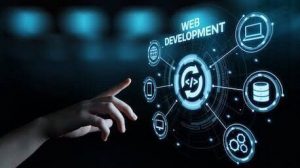
Former Twitter CEO Jack Dorsey recently announced his vision for a new decentralized web platform that is being called Web 5.0.
- The aim is to return “ownership of data and identity to individuals”.
- Web 1.0 is the “read-only Web,” Web 2.0 is the “participative social Web,” and Web 3.0 is the “read, write, execute Web.”
- Web 1.0. Web 1.0 was all about reading, and getting information.
- Web 2.0 was all about reading, writing, and creating. So, users joined social platforms, and these platforms got big because of this created content.
- Web 3.0 is all about reading, writing and owning. So, builders and creators can now own a piece of their own community, through NFTs, tokens etc.
- Web 5.0 Being developed by Dorsey’s Bitcoin business unit, The Block Head (TBH).
- Simply put, Web 5.0 is Web 2.0 plus Web 3.0 that will allow users to ‘own their identity’ on the Internet and ‘control their data’.
- Both Web 3.0 and Web 5.0 envision an Internet without threat of censorship – from governments or big tech, and without fear of significant outages.




